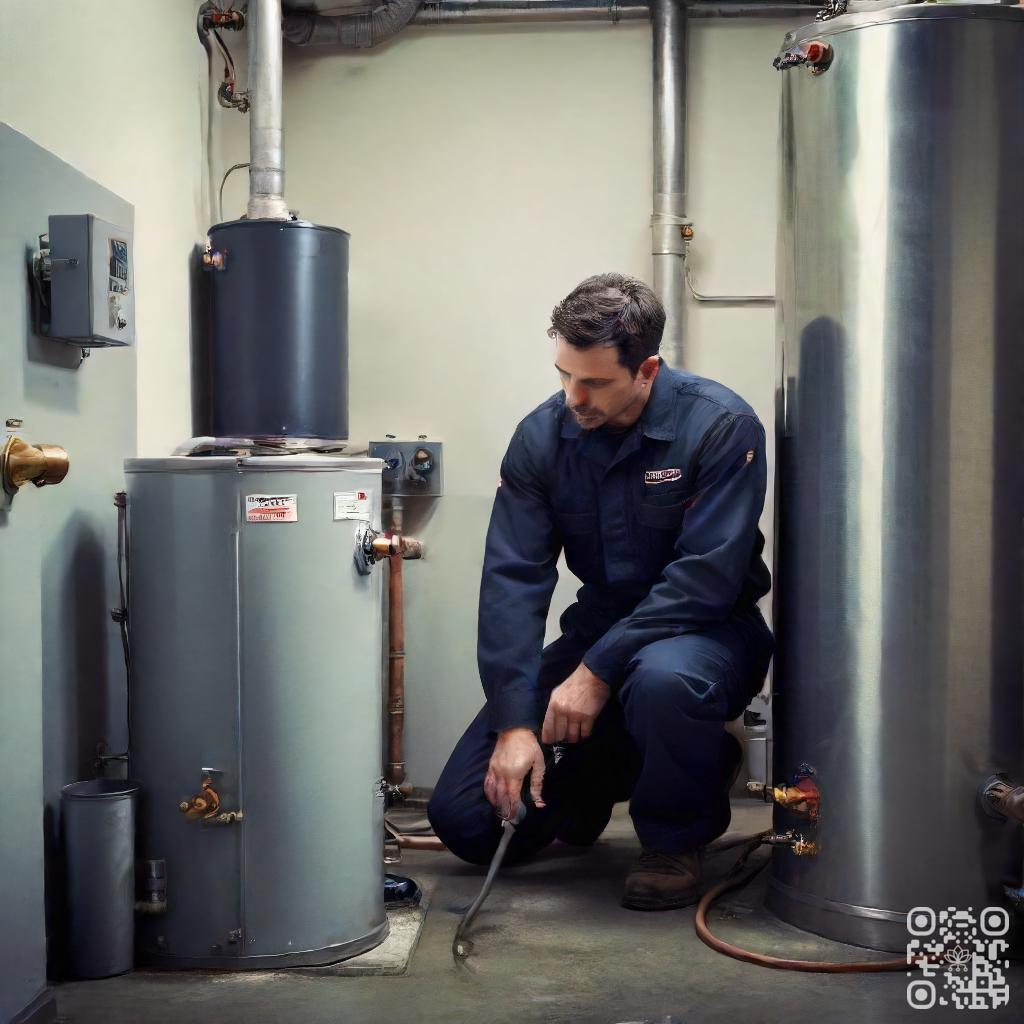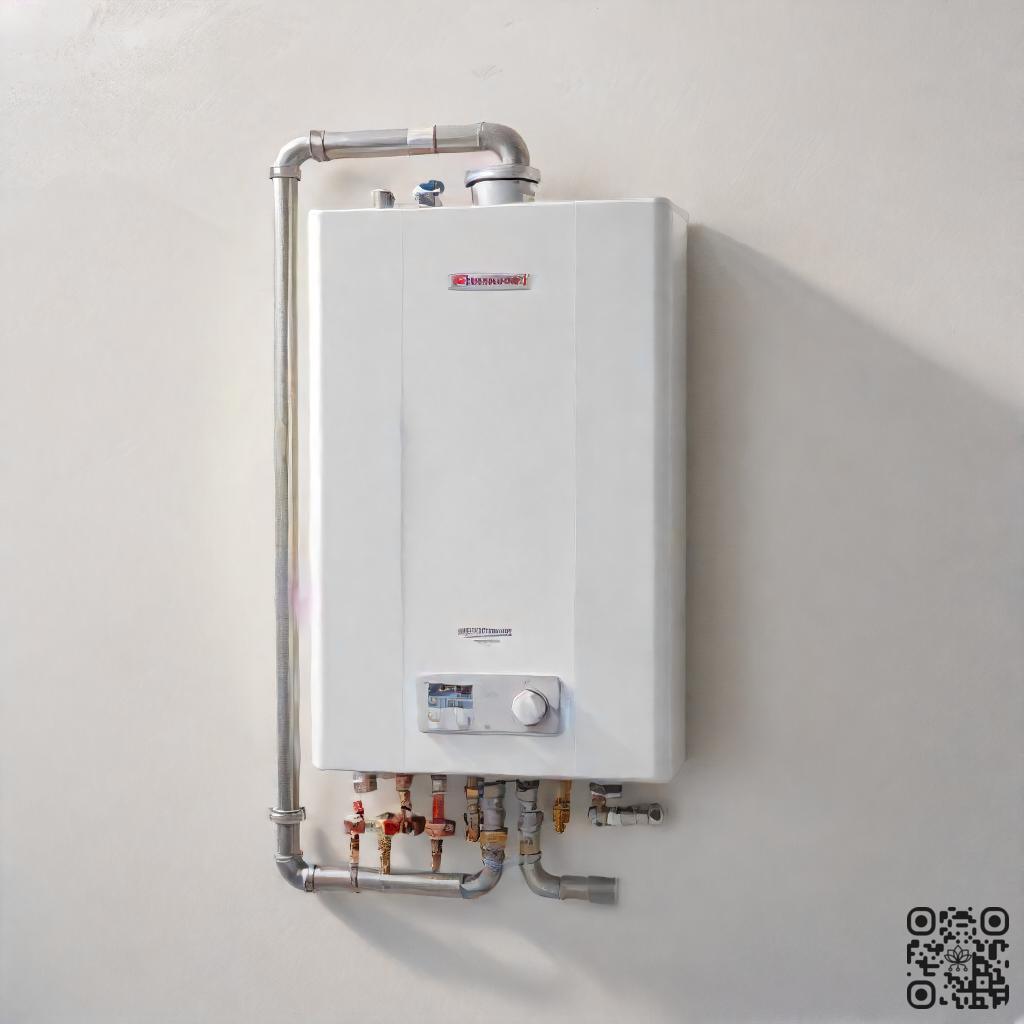
Flushing a tankless water heater is an important maintenance task that helps to ensure its optimal performance and longevity. By removing any mineral deposits or sediment buildup, flushing helps to prevent clogs and improve the efficiency of the heater.
It is recommended to flush the tankless water heater once a year, or more frequently in areas with hard water. Flushing is a simple process that involves connecting a hose to the heater, draining the water, and then flushing it with a vinegar solution.
Regular flushing will help to keep your tankless water heater running smoothly and providing hot water whenever you need it.
Signs that your tankless water heater needs flushing
If you own a tankless water heater, vital to keep it well-maintained to ensure optimal performance. One essential maintenance task is flushing the system periodically. Flushing helps remove mineral deposits and other impurities that can accumulate over time and affect the heater’s efficiency. Here are some signs that indicate your tankless water heater may need flushing:
1. Decreased hot water supply
If you notice a decrease in the amount of hot water your tankless water heater is producing, it could be a sign that mineral buildup has occurred. Flushing the system will remove these deposits and restore the heater’s ability to provide ample hot water.
2. Unusual noises
Unusual noises coming from your tankless water heater, such as banging or rumbling sounds, can be an indication of mineral deposits or sediment accumulation. Flushing the system will help eliminate these deposits and reduce the noise.
3. Increase in energy bills
If you have noticed a sudden increase in your energy bills without any other changes in your household, it could be due to an inefficient tankless water heater. Mineral buildup can cause the heater to work harder and consume more energy. Flushing the system will improve its efficiency and lower energy usage.
4. Foul odor from the water
If there is a foul odor coming from your hot water, it could be a sign of bacterial growth or other contaminants in the tankless water heater. Flushing the system will help eliminate these odors and ensure clean, fresh-smelling water.
5. Water discoloration
If you notice that the water coming from your tankless water heater is discolored or has a rusty tint, it could be due to mineral buildup or corrosion inside the system. Flushing the system will remove these impurities and restore clear, clean water.
Regular flushing of your tankless water heater is crucial to maintain its performance and extend its lifespan. By approaching these signs promptly and flushing the system as needed, you can ensure that your tankless water heater continues to provide hot water efficiently and reliably.
| Signs | Possible Causes |
|---|---|
| Decreased hot water supply | Mineral buildup |
| Unusual noises | Mineral deposits or sediment accumulation |
| Increase in energy bills | Inefficient performance due to mineral buildup |
| Foul odor from the water | Bacterial growth or contaminants |
| Water discoloration | Mineral buildup or corrosion |
Steps to Flush a Tankless Water Heater
1. Turn off the power supply
To begin the process of flushing a tankless water heater, it is essential to turn off the power supply. This ensures your safety and prevents any accidents from occurring during the procedure.
2. Shut off the water supply
Next, locate the water supply valve and shut it off. This step is crucial as it stops the flow of water into the tankless water heater, allowing you to proceed with the flushing process.
3. Drain the water heater
Once the power and water supply are turned off, it is time to drain the tankless water heater. This step involves attaching a hose to the drain valve and directing the other end to a suitable drainage location. Open the drain valve and let the water flow out of the tank until it is completely empty.
4. Flush the system with vinegar
After the tank is drained, indispensable to flush the system with vinegar. Vinegar helps remove any mineral deposits or buildup that may have accumulated inside the tankless water heater. Mix equal parts of vinegar and water, and then attach the hose to the cold water inlet and submerge the other end into the vinegar solution. Open the hot water tap and allow the vinegar mixture to circulate through the system for about an hour.
5. Refill and restart the water heater
Once the flushing process is complete, it is time to refill and restart the water heater. Close the drain valve, disconnect the hose, and open the water supply valve. Allow the tankless water heater to fill up with clean water. Finally, turn on the power supply, and your tankless water heater will be ready to use again.
Frequency of Flushing a Tankless Water Heater
Flushing a tankless water heater is an essential maintenance task that helps to ensure its optimal performance and longevity. By removing sediment and mineral buildup, regular flushing can prevent clogs, improve energy efficiency, and extend the lifespan of the unit. When determining how often to flush your tankless water heater, several factors come into play:
1. Manufacturer’s Recommendations
One of the first considerations is to consult the manufacturer’s recommendations. Different brands and models may have specific guidelines on flushing frequency. These recommendations are based on extensive testing and are designed to keep the unit functioning at its best.
2. Usage Frequency
The frequency at which you use hot water in your household also affects how often you should flush the tankless water heater. If you have a large family or use hot water frequently, it is advisable to flush the unit more frequently to prevent any buildup of sediment or minerals.
3. Water Quality
The quality of water in your area plays a significant role in evaluating the flushing frequency. If your water supply has a high mineral content or is hard water, there is a higher likelihood of mineral deposits accumulating in the tankless water heater. Flushing more frequently may be necessary to prevent any potential issues.
4. Climate
The climate in your region can also impact the frequency of flushing. In areas with extremely cold temperatures, the tankless water heater may be subject to more strain, leading to a higher likelihood of sediment buildup. In such cases, more frequent flushing may be required.
Regular flushing of your tankless water heater is crucial for maintaining its efficiency and performance. It is recommended to consult the manufacturer’s guidelines and consider factors such as usage frequency, water quality, and climate to determine the most appropriate flushing frequency for your specific situation. By obeying these recommendations, you can ensure that your tankless water heater operates smoothly and provides a reliable supply of hot water for years to come.

Benefits of Flushing a Tankless Water Heater
1. Improved Energy Efficiency
Flushing your tankless water heater regularly can significantly improve its energy efficiency. Over time, mineral deposits and sediment can accumulate in the system, causing it to work harder to heat the water. By flushing the heater, you can remove these deposits and ensure that it operates at its optimal efficiency, saving you money on energy bills.
2. Increased Lifespan of the Water Heater
Flushing your tankless water heater can also extend its lifespan. The buildup of minerals and sediment can cause corrosion and damage to the internal components of the heater. By flushing it regularly, you can prevent this buildup and keep your water heater functioning properly for a longer period of time.
3. Better Water Quality
Another benefit of flushing your tankless water heater is improved water quality. Over time, minerals and sediment can accumulate in the system, leading to discolored or foul-smelling water. Flushing the heater helps to remove these impurities and ensures that you have clean, fresh water flowing through your taps.
4. Reduced Risk of Breakdowns and Repairs
Regular flushing of your tankless water heater can help reduce the risk of breakdowns and costly repairs. When mineral deposits and sediment build up in the system, they can cause clogs and blockages, leading to decreased water flow and potential damage to the unit. Flushing the heater helps to prevent these issues and keeps your water heater running smoothly.

Professional Tankless Water Heater Flushing Services
In terms of maintaining the efficiency and longevity of your tankless water heater, professional flushing services play a crucial role. Here, we will scrutinize the benefits of hiring a professional for this task, compare the costs with DIY flushing, and discuss the frequency of professional flushing.
1. Benefits of Hiring a Professional
Flushing your tankless water heater requires technical expertise and knowledge of the specific model. By hiring a professional, you can ensure that the flushing process is carried out correctly and efficiently. Professionals have the necessary tools and experience to remove sediment, mineral deposits, and other build-ups that can affect the performance of your water heater. This not only improves its efficiency but also extends its lifespan, saving you money in the long run.
2. Cost Comparison with DIY Flushing
In the course of some homeowners may opt for a do-it-yourself approach to save money, pivotal to consider the potential risks and costs involved. DIY flushing requires purchasing or renting specialized equipment, which can be expensive. Moreover, improper flushing techniques can lead to damage to your water heater, resulting in costly repairs or even the need for a replacement. Hiring a professional eliminates these risks and ensures a thorough and safe flushing process.
3. Frequency of Professional Flushing
The frequency of professional flushing depends on various factors, including the quality of your water supply and the usage patterns in your household. As a general guideline, it is recommended to have your tankless water heater professionally flushed once a year. Notwithstanding, if you live in an area with hard water or notice a decrease in water flow or temperature, more frequent flushing may be necessary. Consulting a professional can help determine the ideal flushing schedule for your specific situation.
To provide you with comprehensive information, we have compiled the following table that compares professional flushing services with DIY flushing:
| Flushing Method | Cost | Efficiency | Longevity | Risk of Damage |
|---|---|---|---|---|
| Professional Flushing | Varies based on service provider | High | High | Low |
| DIY Flushing | Cost of equipment | Variable | Variable | High |
Bottom Line
Flushing a tankless water heater is an essential maintenance task that should not be overlooked. Over time, mineral buildup can accumulate in the unit, leading to decreased efficiency and potentially costly repairs. Regular flushing can help extend the lifespan of your tankless water heater and ensure it continues to provide hot water on demand. It is recommended to flush the unit at least once a year, but frequency may vary depending on the hardness of your water and usage patterns. If you are unsure about how to flush your tankless water heater, consult the manufacturer’s instructions or hire a professional plumber to do the job.
By taking the time to properly maintain your tankless water heater, you can avoid unexpected breakdowns and ensure that your unit operates at peak performance for years to come. Don’t neglect this important task – schedule a flushing today and enjoy the benefits of a well-maintained tankless water heater.
Read More:
1. Can I Flush My Water Heater With Vinegar?
2. Are There Signs My Water Heater Needs Flushing?











